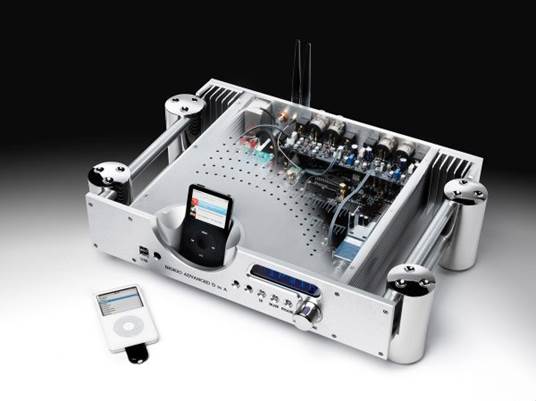This is not a system that will play in the background while
you attend to other tasks. It is never bright or forward, but it demands your
full attention from the outset. The way it handles vocals is simply stunning.
Every line is delivered with urgency – whoever the performer may be – and it is
distracting in the very best possible way. The space and separation between
voices and instruments on larger-scale musical pieces is absolutely captivating
and the performance is believable in a way that a system without this
effortless sense of power can struggle to convey. The PMCs manage to combine
considerable power with an agility and sense of timing that is truly
outstanding. By the standards of systems at this price, 100W is not a huge
amount of power, but the way the Chords wield it and the manner in which the
PMCs respond means you never feel you need more.
Beautiful on the inside
What level of attention has been lavished on the outside has
been more than matched on the insides. The technology that powers the Blu CD
Transport and QBD76 DAC is fearsomely complex, but it never impedes the musical
message. Listening to the Cowboy Junkies’ The Caution Horses, you don’t sit
there and think: “I’m sure it is the process of up sampling to 176.4 kHz before
decoding that is doing that”, you simply revel in an uncommonly clear and
natural musical message.
Likewise, the bass of the PMCs is tight, controlled and can
be felt as much as heard. PMC claims a lower frequency response of 29Hz for the
fact.8 and while this seems wildly unlikely when you unbox a speaker as slender
as this, it’s entirely believable upon hearing. This is undoubtedly a result of
years of transmission line experience, but more importantly, it makes Massive
Attack’s Karma coma a master class in potent low-end bass. The really clever
part of this prodigious response is that it never for a second dominates or
impedes the upper registers – you only really notice how good the PMC is in
this regard when you switch to something less well endowed.
The final surprise comes when you connect a turntable to the
Symphonic phonon stage. The Symphonic looks like the QBD76 DAC in many ways –
you can easily peer through the two viewing windows to see that there is a huge
amount of technology and physical componentry being applied to the
all-important business of making music, but when you listen to it, none of it
is remotely intrusive. The Symphonic is quiet as a crypt in terms of background
noise and has an unambiguous realism that hoovers detail from the grooves of a record
and into the willing clutches of the rest of the system.

The final surprise
comes when you connect a turntable to the Symphonic phonon stage. The Symphonic
looks like the QBD76 DAC in many ways.

What level of
attention has been lavished on the outside has been more than matched on the
insides.
The curse of beauty
In some ways this system would have an easier time of it if
the electronics had been casually stuffed into biscuit tins and the speakers’
occupied cabinets finished in roadie-proof black crackle with mesh front
grilles. With no aesthetics to speak of, we would be forced to concentrate on
its astonishing abilities to produce a sound that is a nigh-on perfect blend of
detail, scale and realism. As it is, this system is also an incredible thing to
look at and makes no apology for that.
The effect on encountering it in the flesh for the first
time is quite simply extraordinary and like most objects that can be described
as art, the very fact it divides opinion should be enough to confirm that it
has merit.
While it played a supporting role in the business of selling
Bugatti cars, released from such tasks this is an impressive collection of
electronics that delivers a slice of technical ability, extraordinary visuals
and pulse-racing excitement of any supercar, but at a fraction of the price.
Now, if you don’t mind I’m going to take it for one last spin.